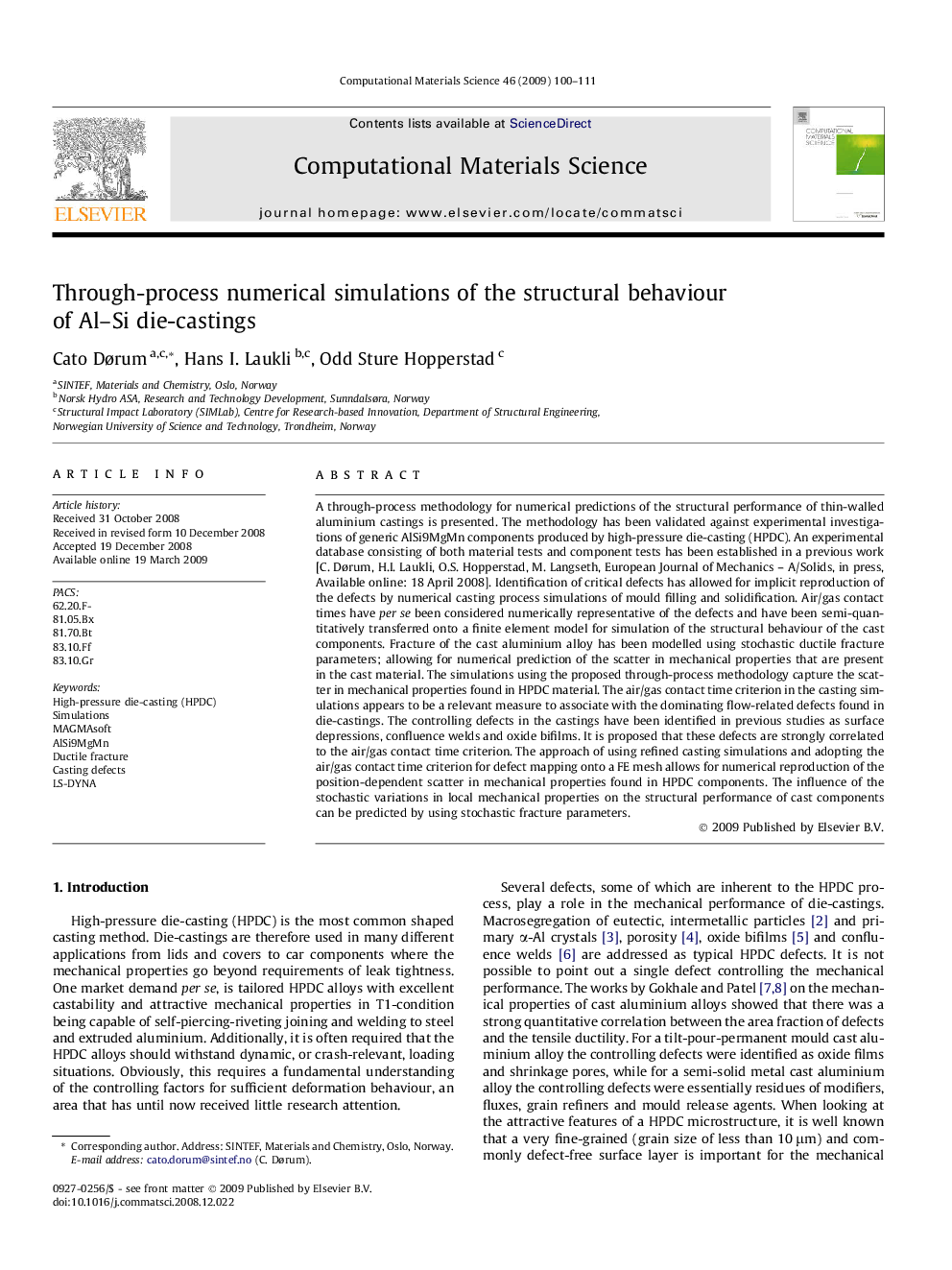| Article ID | Journal | Published Year | Pages | File Type |
|---|---|---|---|---|
| 1563505 | Computational Materials Science | 2009 | 12 Pages |
A through-process methodology for numerical predictions of the structural performance of thin-walled aluminium castings is presented. The methodology has been validated against experimental investigations of generic AlSi9MgMn components produced by high-pressure die-casting (HPDC). An experimental database consisting of both material tests and component tests has been established in a previous work [C. Dørum, H.I. Laukli, O.S. Hopperstad, M. Langseth, European Journal of Mechanics – A/Solids, in press, Available online: 18 April 2008]. Identification of critical defects has allowed for implicit reproduction of the defects by numerical casting process simulations of mould filling and solidification. Air/gas contact times have per se been considered numerically representative of the defects and have been semi-quantitatively transferred onto a finite element model for simulation of the structural behaviour of the cast components. Fracture of the cast aluminium alloy has been modelled using stochastic ductile fracture parameters; allowing for numerical prediction of the scatter in mechanical properties that are present in the cast material. The simulations using the proposed through-process methodology capture the scatter in mechanical properties found in HPDC material. The air/gas contact time criterion in the casting simulations appears to be a relevant measure to associate with the dominating flow-related defects found in die-castings. The controlling defects in the castings have been identified in previous studies as surface depressions, confluence welds and oxide bifilms. It is proposed that these defects are strongly correlated to the air/gas contact time criterion. The approach of using refined casting simulations and adopting the air/gas contact time criterion for defect mapping onto a FE mesh allows for numerical reproduction of the position-dependent scatter in mechanical properties found in HPDC components. The influence of the stochastic variations in local mechanical properties on the structural performance of cast components can be predicted by using stochastic fracture parameters.
